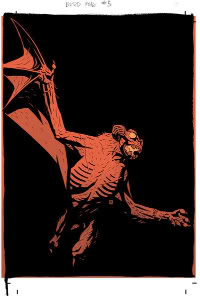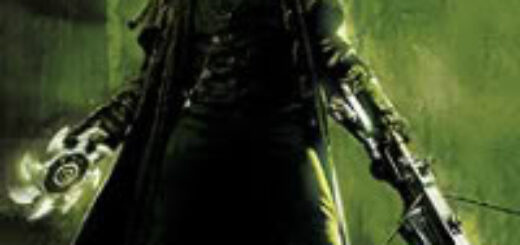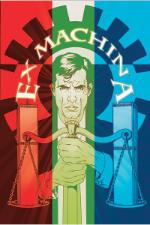Interview: Joshua Dysart on ‘B.P.R.D.: 1946’
 One of this year’s big additions to the Hellboy universe has been the series BPRD: 1946, which puts the spotlight on Trevor Bruttenholm as he investigates the occult legacy of the Third Reich.
One of this year’s big additions to the Hellboy universe has been the series BPRD: 1946, which puts the spotlight on Trevor Bruttenholm as he investigates the occult legacy of the Third Reich.
I recently caught up with series co-writer Joshua Dysart to talk about BPRD, working with Mike Mignola and Dysart’s strange journey into comics writing. Dysart also touched on the wealth of other projects he’s working on, including one based on musician Neil Young’s life and music.
COMICMIX: How did you end up working on BPRD: 1946 and being so closely involved with the Hellboy books for Dark Horse?
JOSHUA DYSART: It was kind of a long and winding road, as these things mostly are. I first met Mignola and [Editor] Scott Allie in Dallas, Texas at the first Wizard World there in 2004. We hung out by the pool table in the bar together and just talked. Our aesthetic was very similar. About six to eight months later, Scott got me the job on the Van Helsing comic. Which, despite its source material, I’m still really proud of. When Mike was moving out to Los Angeles he showed interest in finding a local writer to work with. Scott mentioned my name. Then Mike went out to a local comic book shop and the owner, a close personal friend of mine, recommended me. We set up a luncheon date and I was terribly, terribly nervous. But I did my little song and dance and it worked out. That was late in 2006.
CMix: That has to be a little intimidating to go pitch yourself to somebody like Mignola.
JD: I was late to the meeting as well, by the way. I ride a bicycle everywhere and at the time didn’t have a cellphone. So on top of being terribly intimidated, I was late with no way to contact him. I thought for sure that being without a cellphone and a car was not going to bode well for me as a professional. But it turned out that Mike didn’t have a car or a cellphone either, and I think there was a sense of a shared value system in this — like two Luddites finding each other amongst the Blackberry/BMW wasteland of Santa Monica, CA. But all the way around it was a pretty terrifying thing, the notion of the meeting.
But in the end, it was fine. Mike is so enthusiastic about his creation — and as a reader, so am I — so I was put at ease very quickly. I don’t think he even noticed I was late.
The advice I got from Scott Allie before the meeting was, "Don’t act like such a fucking hippie."



 Born in 1949, ComicMix creator/columnist John Ostrander loved comics from early on but initially followed a different love: religion. Raised Roman Catholic, Ostrander wanted to become a priest and attended a year of seminary before deciding it wasn’t right for him. Instead he turned to acting.
Born in 1949, ComicMix creator/columnist John Ostrander loved comics from early on but initially followed a different love: religion. Raised Roman Catholic, Ostrander wanted to become a priest and attended a year of seminary before deciding it wasn’t right for him. Instead he turned to acting. 




.jpg)
 Writer / Producer Mark Verheiden is one of those fortunate individuals who has been able to make a living doing what he loves. His list of career accomplishments crosses most of today’s media landscape from feature films to series televison to comic books.
Writer / Producer Mark Verheiden is one of those fortunate individuals who has been able to make a living doing what he loves. His list of career accomplishments crosses most of today’s media landscape from feature films to series televison to comic books. Today is a popular birthday for comic book creators! Three very different comic book luminaries all share March 26.
Today is a popular birthday for comic book creators! Three very different comic book luminaries all share March 26.








